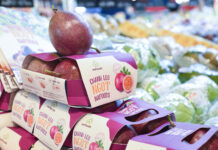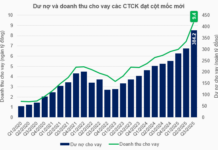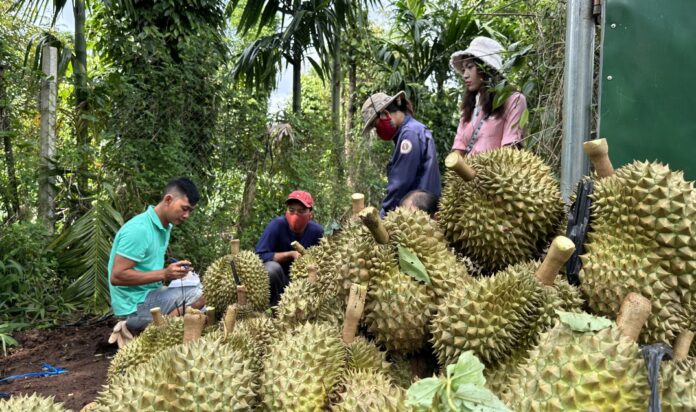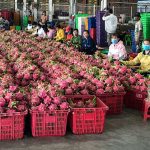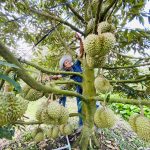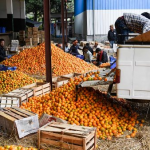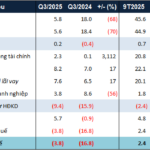Fruit and Vegetable Exports Reach $3.83 Billion in Seven Months
Consistent double-digit growth has propelled Vietnam’s fruit and vegetable exports to new heights. With the current momentum and growth trajectory, Vietnam’s fruit and vegetable exports are on track to achieve a record-breaking $7 billion in 2024.
This projection is well-founded, as exports in the first seven months reached $3.83 billion, a 24.3% increase year-on-year. Notably, among the top 10 export markets for Vietnamese fruits and vegetables (excluding the Netherlands), all recorded double-digit growth. Furthermore, South Korea has recently agreed to import fresh grapefruit and durian from Vietnam, and the durian season in the Central Highlands is in full swing while Thailand’s season has ended.
Mr. Dang Phuc Nguyen, Secretary-General of the Vietnam Fruit and Vegetable Association, shared that the export value of Vietnam’s fruits and vegetables to South Korea and Japan is on an upward trend. In addition to building its brand and position in the traditional market of China, the fruit and vegetable industry is expanding its reach in Northeast Asia.
In Northeast Asia, China and South Korea are the top two countries for Vietnam’s fruit and vegetable exports. China leads the way, accounting for 64% of total export revenue, a 22% increase compared to the same period last year. South Korea follows closely with a significant 55% year-on-year increase.
Mr. Nguyen believes that Northeast Asia will be a strategic market for Vietnamese fruits and vegetables in the future. Export businesses will not only benefit from tariff advantages but also reduced transportation and logistics costs compared to markets like the EU and the US.
According to the Plant Protection Department, within the RCEP bloc, Vietnam has the largest number of permitted fruit exports to China, with 12 products, including temporary exports of passionfruit and chili and pilot exports of coconuts. New Zealand comes second with five products: mango, dragon fruit, jackfruit, lemon, and grapefruit. As for the Japanese market, Vietnam has successfully exported dragon fruit, mango, and lychee and is negotiating to export grapefruit.
The Plant Protection Department is working on opening up the market for citrus fruits, medicinal plants, and frozen durian to China. Additionally, they are negotiating the export of passionfruit, lychee, and longan to Australia and passionfruit and grapefruit to New Zealand.
Mr. Nguyen emphasized that with free trade agreements in place and reduced import tariffs, countries will impose technical barriers. This requires Vietnamese producers and exporters to stay up-to-date with the import regulations of target markets to ensure compliance.
Mr. Nguyen Dinh Muoi, Deputy General Director of Vina T&T Import-Export Company, shared that importing countries have set up various technical barriers, forcing businesses and producers to adhere strictly to their standards. Therefore, farmers growing fruits and vegetables for export must follow the correct technical procedures.
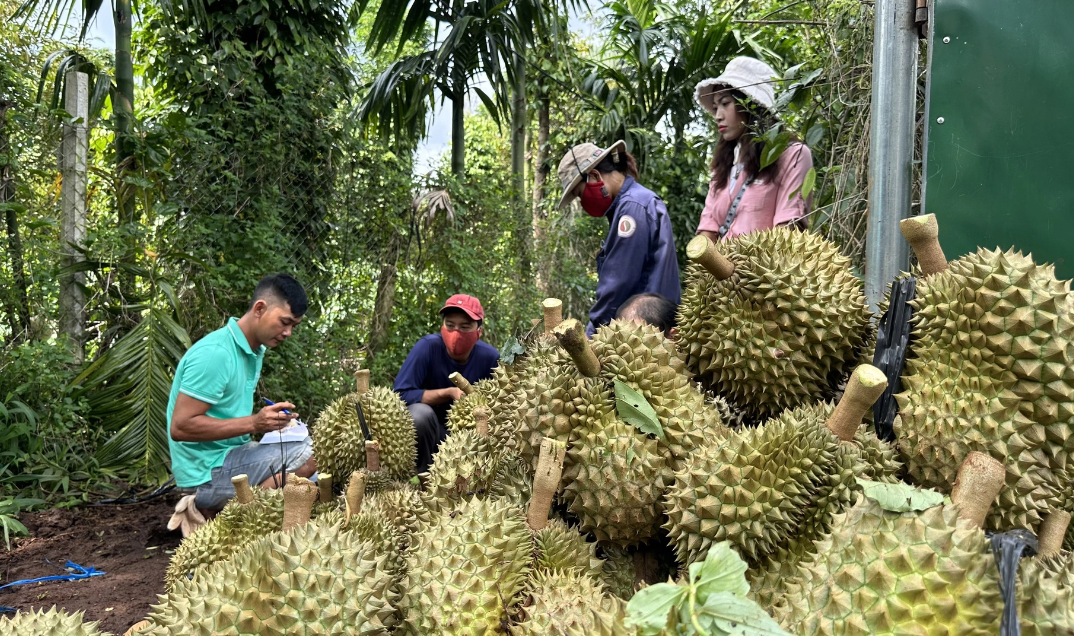
It is expected that in 2024, a protocol will be signed for frozen durian products
Durian Exports Could Reach Approximately $3 Billion
Riding on this success, businesses are now pushing to expand their export markets. Durian has been a significant contributor to the fruit and vegetable export revenue, with exports reaching $1.32 billion in the first half of the year, a 45% increase year-on-year. With the durian season in the Central Highlands in full swing, it is an opportune time for durian to make a breakthrough and solidify its position, especially in the Chinese market. Mr. Nguyen predicts that durian exports could reach approximately $3 billion.
Ms. Ngo Tuong Vy, CEO of Chanh Thu Fruit Import-Export Corporation, believes that durian will continue to be a thriving fruit in the coming years. Apart from China, export businesses are exploring new markets in potential countries like India and other Asian nations. However, to facilitate the development and smooth export of durian, Vietnam needs to establish standards for processing and post-harvest preservation to provide a framework for exporting businesses.
According to Mr. Nguyen Quang Hieu, Deputy Director of the Plant Protection Department, the area of durian cultivation with new planting area codes is approximately 25,000 hectares, compared to the total durian cultivation area of about 150,000 hectares in Vietnam. While Vietnam continues to request China to expand the planting area codes, the focus will not only be on expanding the planting area and increasing the cultivation area but also on controlling and managing quality.
It is expected that in 2024, a protocol will be signed for frozen durian products. Frozen durian will diversify the durian industry, providing additional technologies and methods for long-term preservation, thereby reducing seasonal pressure. Growers will be able to focus more on producing high-quality fresh fruits for export.
Deputy Minister of Agriculture and Rural Development, Phung Duc Tien, stated that the Plant Protection Department is closely managing the entire production chain, from raw material areas and planting areas to codes and facilities, in the context of deep integration and the need to meet market demands. This is essential for building the brand of Vietnamese agricultural products.
“Sensitivity and strict adherence to international regulations are the fundamental solutions for the sustainable development of all product sectors, including fruits and vegetables. The Ministry of Agriculture and Rural Development, along with other ministries, sectors, and localities, is tightening quality control and management of planting areas. With a large and stable supply, the quality equation needs to be effectively addressed to propel fruit and vegetable exports to even higher growth,” emphasized Deputy Minister Phung Duc Tien.
Rambutan Delight: A Rare and Exquisite Fruit for Festive Occasions
The price of durian in the Mekong Delta region is currently quite high, with an average profit of about 1 billion VND for cultivating 1 hectare of this fruit tree.





